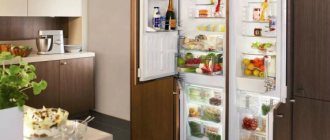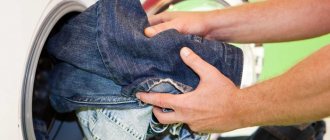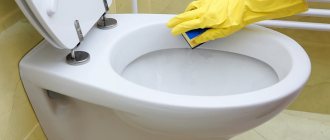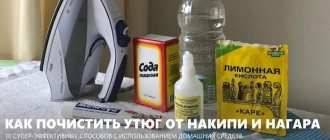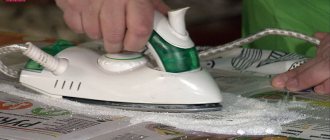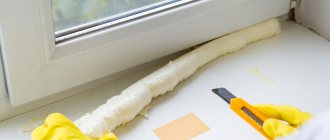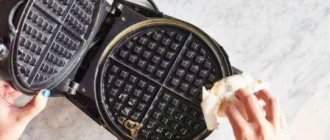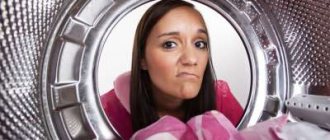Why does plastic turn yellow?
Plastic can turn yellow due to improper care, sudden temperature changes and low-quality additives in the polymer, and fade in the sun. Let's look at the five main reasons why plastic turns yellow.
Burns out in the sun
Ultraviolet radiation destroys the polymer compounds of plastic. To avoid yellowing, light stabilizers and benzophenol are added to plastic during production, which block the penetration of sunlight into the plastic and color change.
Temperature changes
With sudden temperature changes, the plastic is deformed and microcracks appear in it, into which air begins to flow. This leads to slow oxidation of the top layer of plastic and yellowing.
Improper care
The surface layer of plastic can be destroyed by acids, alkalis, aggressive cleaning agents and hard brushes. At the same time, microcracks form on the surface of the polymer, into which dirt gets trapped, changing the color of the material.
Dust, grease and soot
If there is no hood in the kitchen or it cannot cope with the outflow of air, and people smoke at home, this leads to soot, dust, grease and nicotine deposits settling on plastic items. They penetrate the surface layer of the plastic and change its color. First of all, plastic windows in the kitchen turn yellow.
Poor quality material
Violating plastic production technology, using recycled materials or saving on color additives worsens the surface and protective layer of the material. This leads to the rapid appearance of yellow spots on the surface.
Differences between types of plastic panels
Decorative plastic products are divided into two main types, differing only in their protective coating.
The first type is matte materials, which are ordinary plastic without an additional protective layer. Products of this type are not very shiny, but are easily damaged and dirty. It is not recommended to install matte plastic panels in areas with an aggressive environment. Obviously, it is better not to cover the ceiling in the kitchen, which is constantly exposed to fumes and grease, with matte plastic panels; the second type of material is more suitable for it - glossy.
A feature of glossy plastic is its greater resistance to any damage and contamination, which appears due to the application of a special coating to such panels during production.
The protective layer also provides increased resistance to ultraviolet light, and it is much easier to remove dirt from such a material than from matte plastic. A reasonable conclusion would be that a plastic ceiling made of glossy material is more suitable for any kitchen, because when a layer of grease and other contaminants forms on it due to the constant use of a stove, it will not be difficult to wash it.
Home cleaning methods
How to bleach plastic if it has already turned yellow? Available means are used to remove all types of contaminants. Let's look at popular home methods for cleaning plastic from yellowness.
Washing powder and soda
The method is suitable for cleaning double-glazed windows, household appliances and plastic items that can be wet. Mix 50 grams of washing powder, 1–2 tablespoons of soda and one glass of water in a container. Use this solution and a soft sponge to wipe the yellowed parts and leave for 2-3 hours and then rinse with water.
Dishwashing liquid
Dishwashing liquid is suitable for removing mild yellow stains, greasy stains and preventing yellowing of plastic. Dampen a soft sponge or rag with water, then add 2-3 drops of dishwashing liquid and wipe the plastic. Rinse with water and wipe dry.
Vinegar
Vinegar is safe for plastic, but be careful when cleaning patterned plastic surfaces as it may rub off. Vinegar also has a strong pungent odor, so it is recommended to carry out cleaning with a mask. Take 70% bite essence, dampen a soft cloth with it and wipe the yellowish area. Rinse with water and wipe with a dry cloth. To enhance the effect, sprinkle baking soda on the stains and wipe with a sponge soaked in vinegar. Then rinse with water and wipe dry. This method also removes greasy stains from plastic well.
Hydrogen peroxide
Use pharmacy grade 3-6% hydrogen peroxide: it is suitable for cleaning household plastic. It is not recommended to use technical 35–40% hydrogen peroxide, as it is caustic and is used in industry. Dampen a rag or sponge with peroxide, wipe the yellowed stains and rinse with water. If the yellowness is strong, treat the stain 2-3 times.
Alcohol
You can use industrial or medical alcohol to remove yellow stains from direct sunlight. Before cleaning, test the plastic's reaction to alcohol by rubbing a small area of the surface. Dampen a rag or sponge with alcohol, gently rub the yellow stain, and then wipe with a damp cloth.
Citric acid with chlorine
This method is used for severe and old stains, since chlorine has a pungent odor. Before cleaning, put on rubber gloves and open the window. Mix citric acid and bleach in a 1:1 ratio, apply to the yellow spot and leave for 30–40 minutes. Rinse with warm water and wipe dry.
Bleach
Bleach is made from chlorine and diluted with water to create a solution of different cones - the most popular household bleach. To remove yellow stains from plastic, add one tablespoon of bleach to one liter of water. Rub the stain with a sponge and solution or soak the item for 20–30 minutes. Rinse with water and wipe with a dry cloth.
Acetone
This is an aggressive product that is not suitable for all types of plastic, and is rarely used. Before cleaning, put on rubber gloves and a mask and test the effect of acetone on a small area of plastic. Dampen a rag or sponge with the product, wipe the yellow surface without rubbing and rinse with water.
Tooth powder with chalk
Use tooth powder and chalk to remove fresh yellow stains. Crush the chalk, mix it with tooth powder in a 1:1 ratio and add water to make a paste. Apply to the stain, leave for 15-20 minutes and then remove marks with a cloth.
Melamine sponge
The melamine sponge is made from melamine and dense foam rubber and is used to clean any dirt. It is suitable for removing yellowness from plastic without leaving streaks on the surface. Dampen a sponge with water and wipe the stains. Do not use cleaning products - the sponge will lose its properties.
How to wash plastic windows, frames and window sills - algorithm of actions
So, we learned the theory, collected the necessary funds, and removed gross dirt and stains. Now is the time to start cleaning the windows.
- Prepare a container with warm water - first we will remove heavy dirt, dust and soot. Start from the outside of the window. Place a mop with a telescopic handle into the water, squeeze it a little, and carefully remove dust, cobwebs, and dirt from the glass and frame. If your frame is not wide, or it opens inward, great, use a soft cloth. When washing off dirt from the glass with a large amount of water (remember the neighbors below and passers-by - the water should not flow like a river!), drive it away using a glass scraper.
- We begin to wash the frames outside. Use different products to remove different types of contaminants - we described them in detail above. When finishing washing, wipe the outside of the plastic and slopes dry.
- Using the same algorithm, wash the windows inside. Pay special attention to the end surfaces of the frames and crevices - they can be easily cleaned with an old toothbrush.
- After the frames are washed, you can wash the glass. Start by cleaning the outside surface first. Apply the glass cleaner using a spray bottle, and with gentle movements - from top to bottom or vertically, but in one direction - wipe the product with napkins until the glass is dry. Don’t forget to pay attention to the corners – that’s where stains and unwashed areas sometimes remain. If the glass cleaner does not give the desired streak-free clean effect, use starch: apply it to a dry cloth and wipe the glass thoroughly. Then wipe the surface again with a microfiber cloth. In some cases, it is useful to use grandma's old method - adding shine to the glass using crumpled newspaper. But do not forget that newspaper can leave gray marks on the plastic frames! Wash the inner surface of the glass unit using the same algorithm.
- Finish washing the window by cleaning the window sill and wiping it dry.
That's it, your window is shining!
Special means
If home methods do not help, special cleaning products will come to the rescue that will carefully remove yellowness. Before use, read the instructions and use rubber gloves and a mask.
Car cosmetics
Car spray is suitable for removing yellow stains from windows, window sills and household plastics. Spray the product onto the stain, rub vigorously and leave for half an hour. Then wipe with a damp cloth.
Cleaning products for plastic
There are special cleaning products for plastic that remove heavy yellowing and dirt. Cosmoklar, Domestos, Cif, Meine Liebe are universal and effective products. Some of them provide an antistatic effect: after treatment, dust will not accumulate on the surface of the plastic.
Hair lightener
To remove yellowness, you can use a hair bleach: the bleaching function is performed by ammonia, which is part of the product. Add two tablespoons of hydrogen peroxide to one liter of water and a hair lightener by eye. Wipe the yellow stains with the solution and rinse with water.
Napkins
Whitening wipes with special impregnation carefully whiten plastic: they do not remove the protective layer. Suitable for removing yellowness, grease and dirt from computer equipment and household plastics. Wipe off the yellow stain with a napkin and leave to dry.
Aerosol paint
If you can't remove the yellow stain, paint over it with white spray paint. Cover the clean areas of plastic with duct tape and paint the yellow.
Helpful information
To ensure that the process of removing rust from plastic goes without any problems, you must adhere to the following recommendations:
To remove stains from light-colored plastic surfaces, use only white rags. If you take colored fabric, there is a risk of pigment transferring from the fabric to the plastic. As a result, additional cleaning will be required.- You need to wear gloves when working with aggressive compounds. If the product has a pungent odor, additional respiratory protection is required. The room must be ventilated.
- After cleaning is completed, the surface should be wiped with a clean damp cloth. This is necessary in order to remove any remaining product from the plastic and prevent it from damaging the product.
General recommendations
To clean the plastic of different products, follow the recommendations:
- Clean windows and sills from top to bottom.
- Remove microwave stains with citric acid.
- Turn off the refrigerator before cleaning. Use products without a pungent and persistent odor so as not to spoil the products.
- To clean your computer and other equipment, use special wipes.
- Remove the grilles from the air conditioner and rinse the filter with water. Wash the lid and plastic parts with soda.
- Clean surfaces in the toilet, bathroom and shower stall with vinegar or citric acid.
- In a car, in addition to specialized products for removing yellowness, you can use soda and washing powder.
- Use citric acid or vinegar to remove stains in the washing machine.
- Use soft rags and sponges that will not scratch the surface of the plastic.
- When using chemicals, wear masks and gloves.
- Ventilate the room.
- Study the manufacturer's instructions on how to care for plastic.
How to wash plastic panels on the ceiling
The ceiling in the house is one of the main elements of the interior, so it should look clean and well-groomed. On the ceiling, as on all surfaces, dirt, dust, cobwebs form over time, and stains may also appear due to roof leaks, mold growth, residue from tobacco smoke, and traces of flies.
When washing plastic panels, use the products described above and the following recommendations:
- To wash the ceiling in an ordinary room, clean with a vacuum cleaner and a damp cloth.
- Wash kitchen ceiling panels with warm soapy water using a hog bristle brush.
- To make it easier to wash plastic on the ceiling, use a special mop with soft, replaceable rags. Wash the rag as it gets dirty, change the water more often.
- To prevent stains from forming on the ceiling, use products containing alcohol.
Ammonia
An ammonia solution can be used to clean a window, window sill, or polymer surface. Removes various contaminants and makes the surface shiny.
How to protect the surface from yellowing
To prevent yellowing, regularly wash the plastic with soapy water and special products that create a protective layer. If possible, limit exposure of plastic to sunlight and heat. Do not smoke in the kitchen or indoors where there are plastic windows - they may turn yellow. Don’t despair if you can’t remove the old yellow stains on your windows - professionals can handle any stains. Order your apartment windows washed using high-quality cleaning products by experienced cleaners and enjoy cleanliness and comfort.
Pollution in the bathroom of an apartment where a small child lives
Sometimes the housewife is faced with such a problem as drawings with felt-tip pens, pencils and ballpoint pens on the plastic panels of the bathroom.
The following recipe will help in this case:
- For cleaning, a sulfur match head is used, which is soaked briefly in water.
- All contaminated areas are treated with this paste, after which they must be left for some time until traces of the handle disappear.
- The sulfur is washed off with a regular soap solution.
And if children accidentally found a solution of brilliant green and not only got dirty themselves, but also smeared the walls in the bathroom, you can use a bleaching agent.
But for colored surfaces, the test is first carried out in an inconspicuous place. Having selected the desired concentration of the product, you can safely wash away the dirt with this solution.

